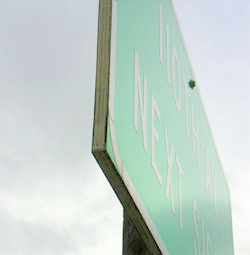Impact and Puncture Resistance
Plywood and OSB (oriented strand board) structural panels have varying degrees of impact resistance based on the panel construction. Plywood improves on wood's well known ability to absorb shock. Its cross-laminated construction helps to distribute impact loads and makes it virtually split resistant. Plywood and OSB both hold up well to sharp blows, fork tine impact and other in-service abuses, which in turn means lower replacement costs. Surfaces of plywood panels with thicker face veneer or more solid veneers adjacent to the face, such as found in underlayment grade panels, are more able to withstand small, concentrated loads, such as those from furniture legs. See the Surface Texture section of the web site or APA publication Underlayment for Resilient Floor Covering, Form L335, for additional information. Panels can also be overlaid with various materials to make the surface more impact resistant such as Fiberglass Reinforced Plastics, metals and polyethylene.
Surface Wear
 Plywood and OSB structural panels have varying degrees of resistant to wear. Considerations for wear resistance are the species of wood in the surface layer, the construction of the panel and the finish or overlay on the panel's surface.
Plywood and OSB structural panels have varying degrees of resistant to wear. Considerations for wear resistance are the species of wood in the surface layer, the construction of the panel and the finish or overlay on the panel's surface.
See the Surface Texture section of the web site or APA publications Caster Loadings on Plywood, Form X227, and Materials Handling, Form M200, for additional information.
Photo courtesy of Olympic Panel Products LLC.